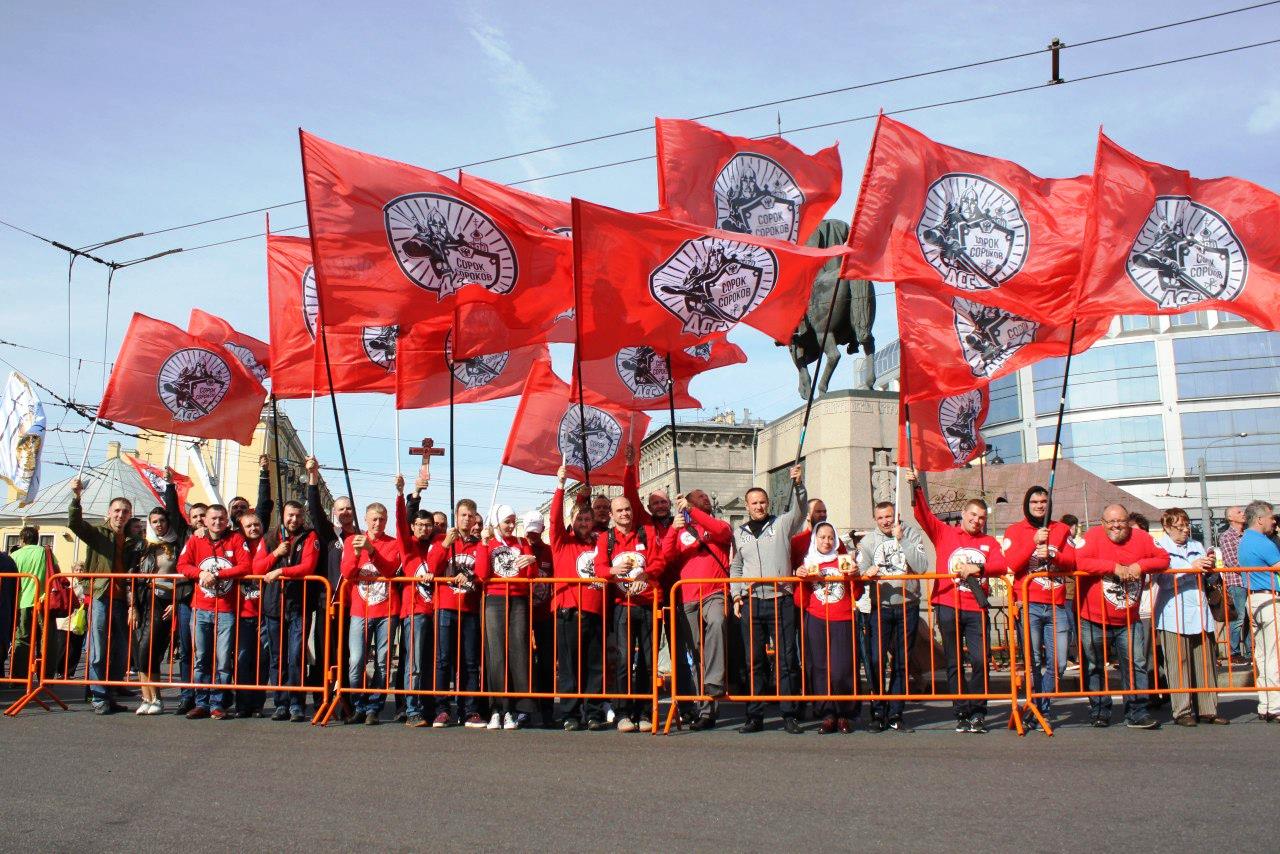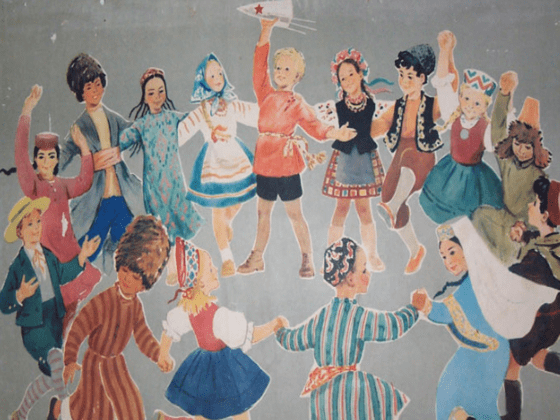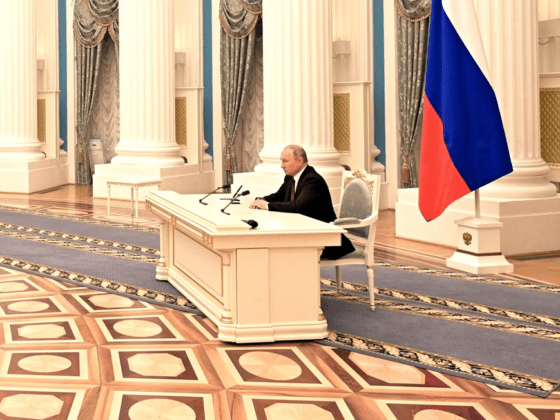Russia’s right-wing realm consists of two segments: the mainstream right and the far right. The first is a faction of the ruling elite, while the second leads a largely oppositional existence. They overlap in both pursuing the goal of restoration of past greatness but differ in how they understand restoration. The mainstream right prioritizes a return to superpower status and opposes the West as a transatlantic structure and enemy of Russia. The far right pursues identitarian projects of ethno-confessional homogeneity or Russian/Orthodox advancement and superiority within the country’s multinational framework. It does not simply oppose the West and its elites but spans a historical line over centuries from the Rothschilds to George Soros with a barely hidden anti-Semitic underpinning. During the pandemic, segments of the right were anti-lockdown and anti-government, but now both segments stand in support of Russia’s “special operation” in Ukraine. Examined here are both right-wing segments’ reactions to the war. We show where they differ and where they overlap in their perceptions. Our argument is that the right’s various segments have merged into one pro-war camp but have contrasting expectations vis-à-vis the scope of the war.
The Far Right: From Ethnic Nationalism toward Imperial Greatness
The far-right’s composition changed over three post-communist decades. Its strong identitarian, Aryanist, neo-Nazi, and White Supremacist components moved toward an imperial, monarchist, and Orthodox fundamentalist outlook. Self-identifying as the [Russian] “nationalist movement,” the far right experienced its peak in the late 2000s with annual “Russian Marches” through Moscow and other cities. As the movement grew increasingly violent, engaging in numerous attacks leaving hundreds dead, the Putin regime imprisoned movement leaders and outlawed most neo-Nazi organizations.
The 2014 Ukraine war divided the realm, with parts of the neo-Nazi segment leaving Russia to fight in Ukraine’s volunteer battalions while others joined the Donbas separatists. The movement has re-organized ever since, mobilizing around an ultra-conservative agenda of restoring “traditions” embodied by the Church and family vis-à-vis the onslaught of international elites planning a “global government” and “Great Reset” through “digitalization” and “transhumanism.” The far right delegitimizes its opponents by portraying them as agents of Russian and foreign elites operating as a “4th LGBT Reich,” from Pussy Riot to protection of immigrants (analog of Black Lives Matter) and lesbians and gays.
The war started as the far-right’s mistrust of the Russian government was at an absolute height. Driven by opposition to the state’s COVID-19 vaccination campaign, the far right was grasping old (and new) conspiratorial beliefs. These purported that an international globalist elite controlled the Russian government, pushing it down the path of force-vaccinating Russia’s population in order to enslave or exterminate it. Despite the many calls to resist state vaccination campaigns, the 2022 war suddenly overturned the far-right’s anti-state stance in some of its most notable organizations, such as Dvizhenie Sorok Sorokov (Forty-Forty Movement), one of the main far-right presences on Russian streets since the early 2010s.
The far-right’s neo-Nazi component opposed the war against Ukraine in 2014, but by 2022 its presence had moderated. Broadly, the far right welcomed Russia’s attack on Ukraine and celebrated President Vladimir Putin’s February 24 speech denouncing Ukraine as a Leninist creation. It derided Western sanctions and applauded the president’s speech at Luzhniki Stadium on March 18, seeing in it references to Russia’s tsarist past. It welcomed Putin’s threats directed at the “collective West’s” “fifth column… national traitors… people who earn money here and live there.” It saw in these words the promise of purging Russia’s political-economic class. It drew a parallel between the war on Ukraine and the January 2022 draft presidential decree on the “Preservation and Strengthening of Traditional Russian Spiritual and Moral Values” and called for silencing the intellectual opposition to the decree.
Both the war and the decree signaled for the far right a restoration of imperial power and “traditional” social organization. In this context, it interpreted as bad news the late March negotiations in Istanbul, and the Russian negotiators’ statements that a compromise was in sight and troops were withdrawing from Kyiv. For the far right, such negotiations were a betrayal of the initial goals of the “special operation,” namely occupying the whole of Ukraine, which the 2014 military operation had already failed to achieve.
Vocal criticism came from those segments that had fought in the 2014 war on the pro-Russian side (such as Igor “Strelkov” Girkin, initially the main warlord operating in the Donbas), questioning the Russian army’s preparedness, demanding a partial mobilization that would also return them to arms, and warning about the effects of Western sanctions. As Russia’s military advance failed to capture major Ukrainian cities, far-right critics demanded that Russia accept the participation of volunteers from their own ranks. News about the recruitment of Syrian volunteers and the involvement of Chechen troops further antagonized far-right critics such as Strelkov. Anatoly Chubais’ March 23 flight to Turkey also sparked further rage in these circles, suspecting that parts of Russia’s elite had sabotaged the war effort again (as in 2014) by allowing such top officials to leave the country.
The Mainstream Right’s “Restoration of the Future”
The mainstream right consists of neo-Eurasianists, neo-Stalinists, conservative Orthodox, and Great Russia nationalists (“supranationalists”). These were early opponents of the 1990s shock therapy, the dismantlement of economic bonds with former Soviet republics, and the 1993 Russian Constitution that attempted to provide a Western constitutional framework. They formed a “conservative counter-movement” against liberalism and Westernization by the late 1990s, which, throughout the 2000s, grew increasingly close to the Putin regime.
Mainstream right members only rarely started from the far-right camp, with the notable exception of the revanchist and self-proclaimed Eurasianist Alexandr Dugin, well known in the West, who decided to become a Putin loyalist in the early 2000s. Some already belonged to the political class before Putin, such as Parliamentary Chairman Vyacheslav Volodin. On February 24, 2022, Volodin made clear that Ukrainians and Russians are “one people,” “one culture,” and “one faith.” Others only started their political careers under Putin and orchestrated the conservative ideological turn after 2012, such as former Minister of Culture Vladimir Medinsky, who was appointed to lead peace talks with Ukraine in March 2022.
Although many on the mainstream right belong to United Russia, membership is not decisive for being part of it. Some have close ties to the Russian Orthodox Church or to the industrial-military complex. For the latter, a prominent figure is Dmitry Rogozin, one of the founders of the “national-conservative party” Rodina (2004-2006) and a former ambassador of Russia to NATO (2008-2012). Rogozin served as vice-premier (2012-2018) before Putin appointed him as general director of the state corporation Roskosmos. In an interview with the TV channel Rossia–24 on March 3, Rogozin threatened the West to cancel collaboration on the Russian space program “in the interests of defense.” A week later, he celebrated the war not only as an act to liberate Ukraine from Nazism but also Russia “from the rot that has now shown itself to be a traitor.”
Elena Panina, a member of the Duma Committee on International Affairs, belongs to that group too. She started in the 1990s as a businesswoman and became chair of Moscow’s Confederation of Industrialists and Entrepreneurs. She founded the Zemstvo movement inspired by Aleksandr Solzhenitsyn’s manifestos and became a board member of the World Russian People’s Council (Vsemirnyi Russkyi Narodnyi Sobor) headed by Patriarch Alexei II. In 2020 she launched her own think tank, Russtrat, which advocates for Russia’s “traditional values” and renewal of efficient strategic planning in Russia. Panina shares with many others in the mainstream right the view that the West wants to destroy Russia, having stated, “Of course, any war ends with negotiations and a peace treaty. However, for Russia, there is only one way to conclude such a treaty—from the position of the winner.”
On the mainstream right’s ideological fringe operates the Izborsk Club that was founded in 2012 by neo-Stalinist Alexander Prokhanov and the Institute of Dynamic Conservatism. With Dugin and Prokhanov, the Izborsk Club maintains a closeness to the monarchist and ultra-Orthodox far right. Dugin’s Eurasianist Movement participated in the “Russian March” in the 2000s, while Prokhanov’s Zavtra newspaper provided the main publication outlet integrating various far-right figures, including, among many others, Girkin-Strelkov. Izborskians (Club members) have an important ally in the former investment banker and orthodox-monarchist Konstantin Malofeev, who, among other positions, also has served as Patriarch Kirill II’s deputy in the World Russian People’s Council since 2019.
In 2015 Malofeev created his TV channel Tsargrad and the “political-analytical center”Katekhon, with Dugin as the website’s chief editor. Katekhon’s supervisory board further includes another Izborskian, the heterodox economist Sergey Glazyev, a full member of the Academy of Science. Glazyev worked on founding the Eurasian Economic Union and currently belongs to the Eurasian Economic Commission’s Board as minister for Integration and Macroeconomics. The Katekhon board features people even closer to the political establishment, such as Federation Council member Andrey Klimov and Leonid Reshetnikov, a former Lt. General of the FSB and former director of the president’s well-known political think tank, the Russian Institute of Strategic Studies (RISI). Both Malofeev’s Katekhon and the Izborsk Club were active supporters of Crimea’s annexation and the Donbas separatists in 2014.
Izborskians regard themselves as the avant-garde of an encompassing alternative agenda to oligarchic capitalism and Western integration, an agenda that they have recently entitled the “strategy of victory.” The 2022 war sparked hopes that Izborskians would have their new momentum, with the power elite finally having no other choice but to listen and implement their developmental statist agenda. This approach entails a strong sovereign state (with a morally renewed elite), protection of core industries, strategic planning, and a conservative idea of Russia as a unique, non-western civilization. They regard the break with the West as a final turn to the East, not just as a question of Russia’s identity but as a long-postponed paradigmatic shift in Russia’s political economy, away from a resource-extraction economy for export toward a domestically-driven growth strategy promoting value-adding in key industries and further Eurasian integration. Therefore, the Club’s economists welcomed the Western sanctions in 2014 and (partly) 2022, seeing them not just as a threat but as an opportunity. Right after the first new round of sanctions, Glazyev, for instance, called for a radical turn in Russia’s monetary policy and for demanding rubles in exchange for gas, an idea that Putin eventually picked up.
Conclusions
Russia’s right wing is united in strongly supporting Putin and the war against Ukraine as a justified and urgent matter for Russia’s survival. Despite many differences about what “full” economic, political, and cultural sovereignty exactly means and how one can accomplish it, the right shares the view that the fight over Ukraine is not just about historic Russia or Eurasian unity but also about “de-Westernizing” and “de-Europeanizing” the whole world. Russia under Putin is supposed to be on a postcolonial mission (together with China and India). Yet there are important differences between the far right and the mainstream right. The far right only bandwagoned on the “conservative turn” after 2012 to survive and continues to foster conspiratorial beliefs that position it on an outright collision course with much of the country’s political-economic elite.
In contrast, despite the overlap with the far right caused by fringe characters such as Dugin, Malofeev, and Prokhanov, the mainstream right represents a fraction of the political class and its elite. It contributed to the “conservative turn” by feeding the propaganda apparatus, supporting Putin in intra-elite conflicts, and inspiring (selectively) concrete policies. Its ideologues promoted the formula of “Russian spring” and “Novorossiya“ for the Donbas, pondered over Russia as a distinct civilization, and elaborated on a new Russian conservatism long before these went into official documents. They pushed for the Eurasian Economic Union since the end of the 1990s, organized the lobby for the law on “internet safety” (2012), established a blacklist for internet websites, and helped to formulate the 2013 law against “gay propaganda,” to name a few examples.
At the same time, the mainstream right’s fringe elements and the ultra-Orthodox and monarchist far right continuously criticize Russia’s political class for not acting decisively enough in developing Russia’s own way. In turn, Russia’s political elite abhors the right’s criticism of Russian politics. Dugin stated after fourteen days of war, “Since the 1990s, a powerful anti-state stratum has formed in Russia, which has been significantly pushed aside by Vladimir Putin. But not eliminated in any way, only weakened.” Although Dugin claims that Putin finally made his “choice” to restore Russia’s empire, there’s uncertainty within the right as to what extent this will last.
Katharina Bluhm is Dean of the Institute for East European Studies and Mihai Varga is Senior Lecturer and Researcher at the Freie Universität Berlin.
Image credit











